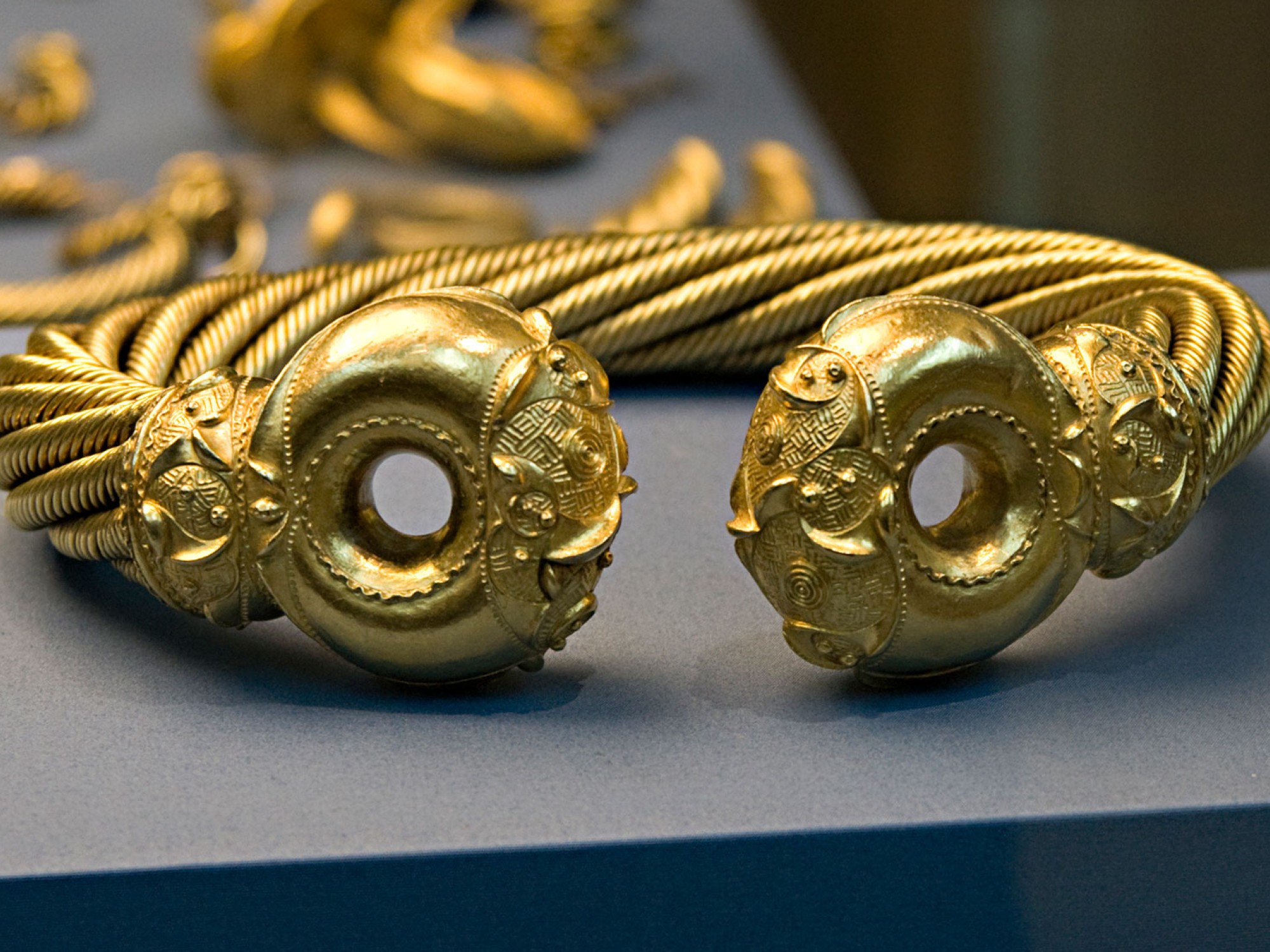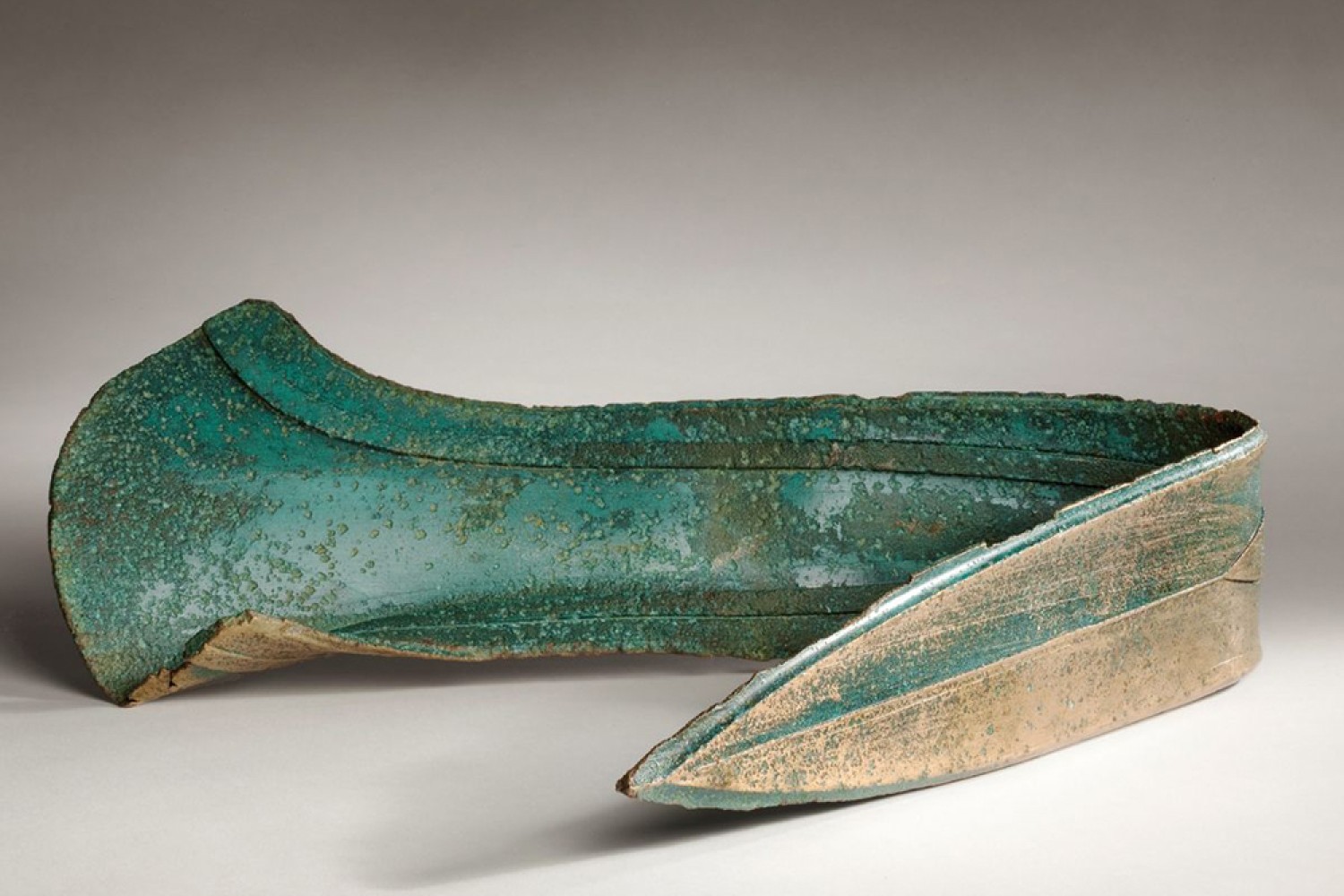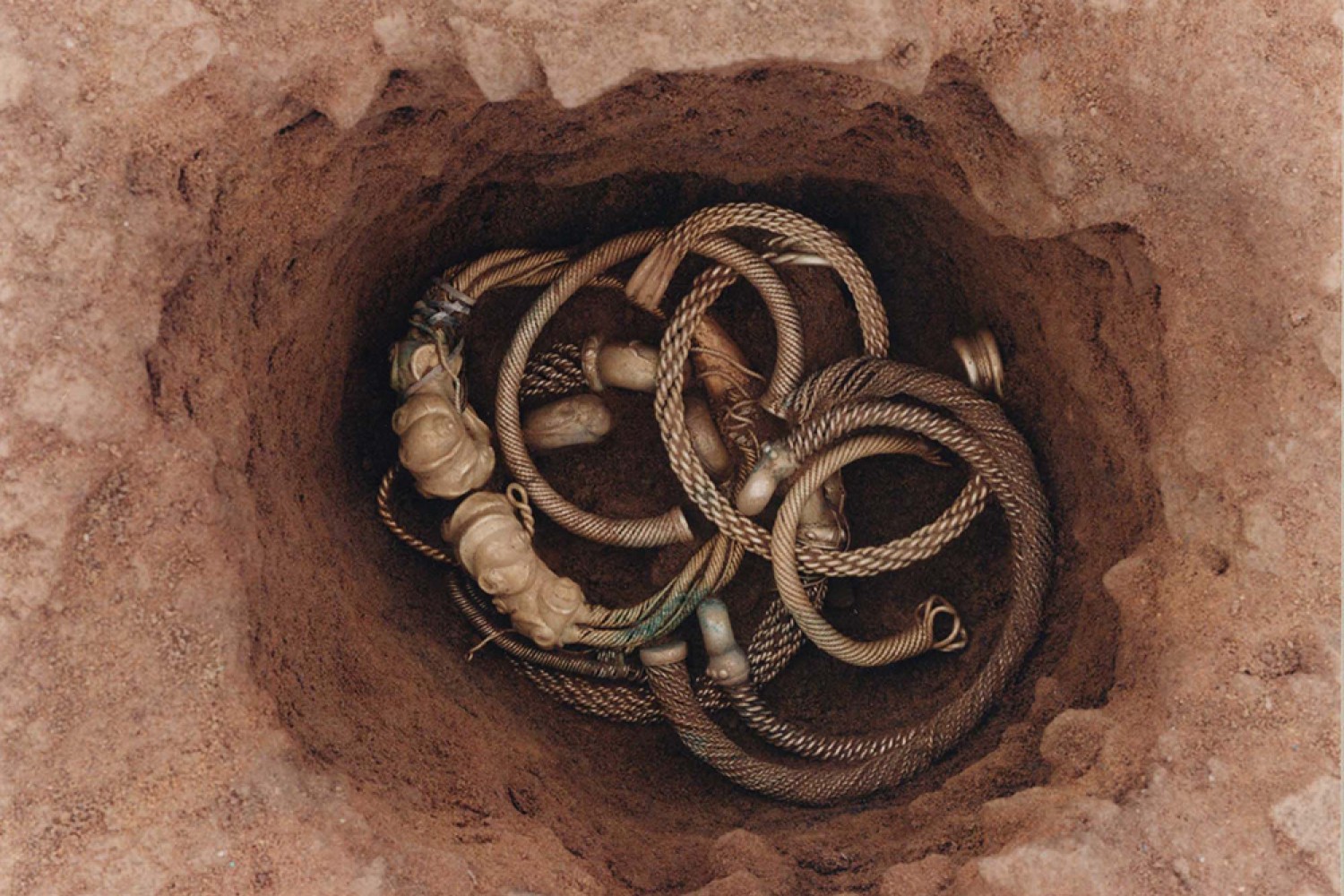
Uncovering Norfolk’s unique treasure trove
We all know Norfolk is rich in history, but few of us realise just how rich and just how important that history is - even on an international basis. And there’s more out there waiting to be discovered...
ABOVE: The Great Torc of Snettisham is currently on display at the British Museum in London, but when it was ploughed up by a local farmer in 1950 this extraordinary kilogram of exquisitely-worked gold was assumed to be part of an old bed post and cast aside. © The Trustees of the British Museum.
Later this year we’ll be celebrating the centenary of the day when a man who’d grown up in Swaffham made the most famous discovery in the history of archaeology. When Howard Carter found the entrance to the tomb of the Pharaoh Tutankhamen, he was some 2,500 miles from his home town - but the archaeological discoveries Norfolk can hold claim to (by accident or design) are equally breathtaking and arguably even more important.
Seven years ago the county recorded the highest number of recorded finds (over 15,000) and treasure caches (119) in the entire country within a 12-month period - many of which were of regional, national and even international significance.
They ranged from a remarkable Anglo-Saxon burial in south Norfolk of a woman who was clearly extremely wealthy and could even have been of royal status to the accurate dating of the second Bronze Age circle on Holme Beach to exactly the same summer its smaller (but more famous) sister of ‘Seahenge’ was constructed, a unique find in British prehistory.
One of the most unusual was a ceremonial copper alloy dagger that weighed in excess of 2kg and had been used as a doorstop since its discovery ten years previously at Rudham. Its owner had been about to throw it away when a friend suggested he should have it identified - wise advice considering archaeologists later declared it to be “truly spectacular and of international significance.”
More recently, staff from the Norfolk Museums and Archaeology Service mapped the historic environment of Norfolk’s coastline in a four-year project from 2002-06 - and created 3,354 new entries on Norfolk’s Historic Environment Record (NHER) database.

ABOVE: Used as a doorstop for over ten years, this peculiar object weighing over 2kg was found in Rudham and has now been identified as a ceremonial copper alloy dagger that experts have now declared to be truly spectacular and of international significance. © Norfolk Museums Service.
A similar investigation of the area around Downham Market and Dereham between 2007-08 added 382 new records (including ancient ceremonial and funeral sites) to the database, increasing the area’s presence in it by over 30% - and a similar survey of Breckland that ended five years ago added almost 500 new records.
Although they might appear to be rather academic exercises, the projects are still increasing our knowledge of Norfolk - how it looked and how its people lived - from the Neolithic period to the Second War, a span of over 6,000 years.
But Norfolk can hold claim to even older treasures. After all, this is where the West Runton Mammoth was discovered in 1990 (the largest nearly complete mammoth skeleton known and the oldest ever found), where an ex-policeman found the 500-000 year old “Happisburgh Handaxe” which is one of the oldest handaxes ever discovered in Britain, and the oldest human footprints ever seen outside Africa have been found - which may well be a million years old.
Perhaps one of the most famous finds in Norfolk is the well-known Snettisham Hoard, which actually comprises a number of discoveries made in and around the village between 1948-73.
In total they consist of metal, jet and over 150 gold, silver and copper alloy fragments, over 70 of which form complete torcs, dating from around 70BC. The most spectacular single item is the Great Torc, which is now held by the British Museum. Weighing in at just over 1kg, it’s an exquisitely worked piece of gold (with a small amount of silver) accidentally found by a local farmer in 1950 who was ploughing a field. According to the oft-repeated story, he assumed it was simply part of an old iron bed, and threw to the side.
Today it forms the centrepiece of a collection that is jointly-owned by Norwich Castle Museum and the British Museum - and when the BBC made a documentary about the 10 most important discoveries ever made in Britain it made number four on the list.
And while this may all seem to be concerned with the past, it’s very much a thing of the present.
Just last month it was announced that volunteers in a community archaeology project on the grounds of Woodgate Nursery just outside Aylsham had uncovered the remains of a 200-year-old kiln that once fired up some 20,000 bricks a day.
“We’ve got 10,000 years of local history here,” says Peter Purdy, who owns the nursery and founded the Aylsham Roman Project, “and in addition to evidence of the Bronze and Iron Ages there are two Roman brick kilns on the site. It’s pretty endless, but it’s also a lot of fun for our volunteers, who are of all ages. They love uncovering the secrets of the past beneath their feet.”
And who knows what they’ll be digging up next?

ABOVE: A small part (the bottom layer) of one of the finds that constitute the Snettisham Hoard. © The Trustees of the British Museum.
